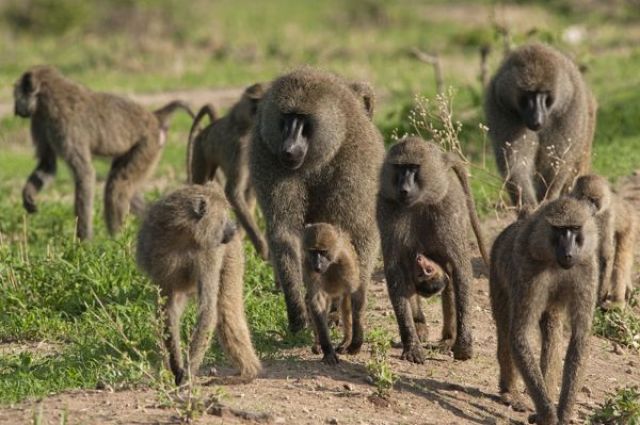Baboons are primates. There are five species of baboons and each species is native to one of five areas of Africa. The hamadryas baboon is also native to part of the Arabian Peninsula. Baboons are among the largest non-hominoid primates and have existed for at least two million years.
Baboons vary in size and weight depending on the species. The smallest, the Kinda Baboon, is 50 cm in length and weighs only 14 kg, while the largest, the chacma baboon, is up to 120 cm in length and weighs 40 kg . All baboons have long, dog-like muzzles, heavy, powerful jaws with sharp canine teeth, close-set eyes, thick fur except on their muzzles, short tails, and nerveless, hairless pads of skin on their protruding buttocks called ischial callosities that provide comfort when sitting. Male hamadryas baboons have large white manes. Baboons exhibit sexual dimorphism in size, colour and/or canine teeth development.
Baboons have diurnality and are terrestrial, but sleep in trees, or on high cliffs or rocks at night, away from predators. They are found in open savannahs and woodlands across Africa. They are omnivorous. Their common sources of food are grasses, seeds, roots, leaves, bark, various fruits, insects, fish, shellfish, rodents, birds, vervet monkeys and small antelopes. Their principal predators are Nile crocodiles, leopards, lions and hyenas. Most baboons live in hierarchical troops containing harems. Baboons can determine from vocal exchanges what the dominance relations are between individuals.

